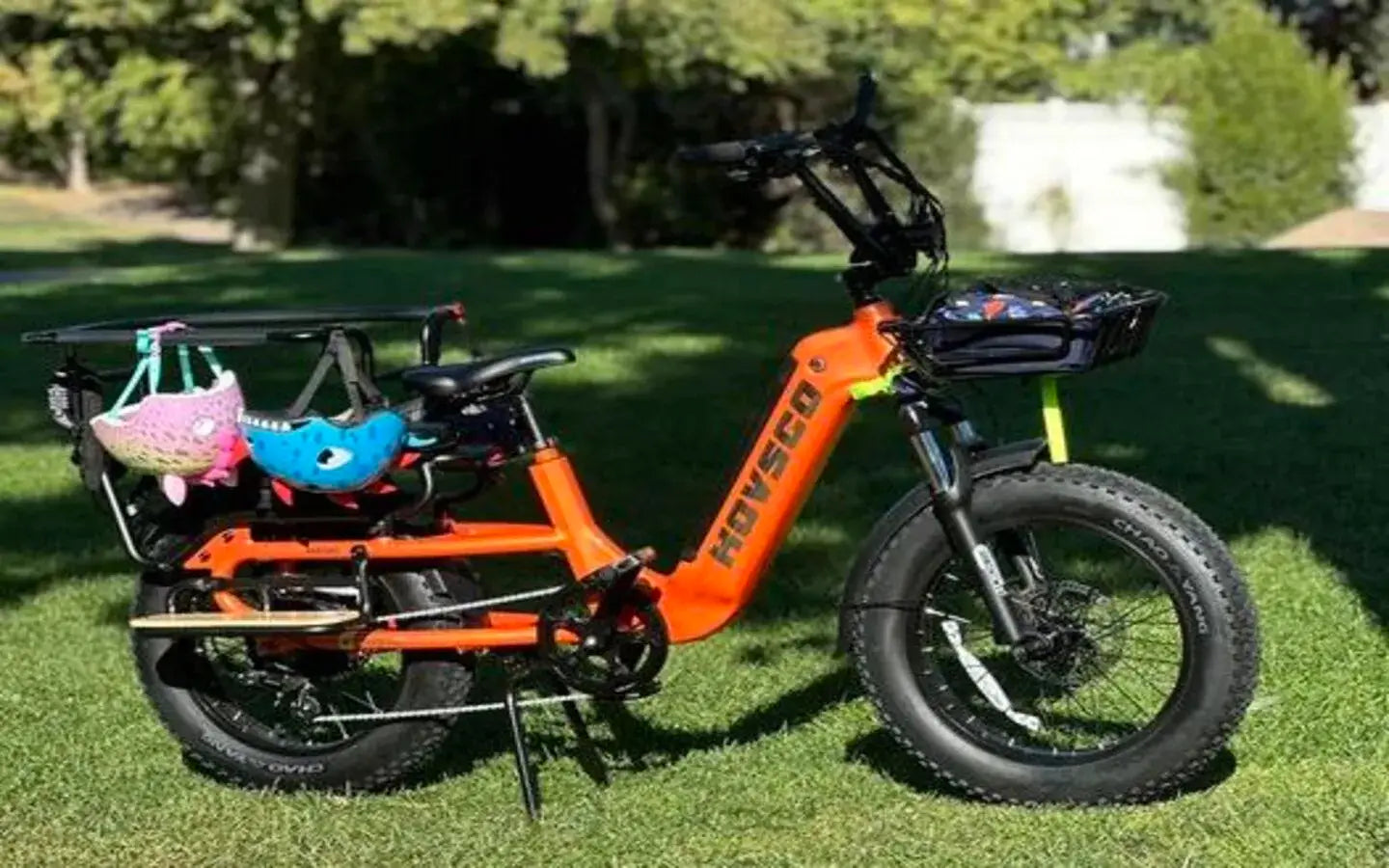
- by LiuJiazhu
What Environmental Benefits Do Two-Seater E-Bikes Provide?
- by LiuJiazhu
Two-seater e-bikes reduce carbon emissions by replacing car trips, improve energy efficiency through electric-assist motors, and decrease traffic congestion. They promote sustainable urban mobility by encouraging shared rides, minimizing road wear, and using recyclable components. These benefits make them a low-impact, high-efficiency transportation solution for eco-conscious commuters.
Two-seater e-bikes produce zero tailpipe emissions and use energy-efficient motors, slashing greenhouse gas output by up to 90% versus gas-powered cars. Their shared-ride design amplifies per-mile environmental savings.
Unlike cars, which emit 4.6 metric tons of CO₂ annually on average, a two-seater e-bike generates emissions only indirectly via electricity—and even less with renewable energy. For instance, a 20-mile commute in a gas car emits ~18 lbs of CO₂, while an e-bike emits just 1-2 lbs when charged on a mixed grid. Moreover, their lightweight design reduces energy demand: e-bikes use ~30-100Wh per mile, compared to a car’s 800-1,500Wh. Pro Tip: Pairing e-bikes with solar charging maximizes emission cuts. Think of it like replacing a daily coffee shop trip with a thermos—small changes compound into big environmental wins.
Two-seater e-bikes achieve 10x higher energy efficiency than cars by combining pedal-assist tech with optimized motor usage. Their shared capacity spreads energy costs across two riders.
E-bike motors typically operate at 70-90% efficiency, converting most electrical energy into motion, while internal combustion engines waste 60-80% as heat. A two-seater e-bike consumes ~0.5 kWh for 20 miles—equivalent to a microwave running for 30 minutes. In contrast, an electric car uses ~7 kWh for the same distance. Pro Tip: Charge during off-peak hours to reduce grid strain and leverage cleaner energy. Imagine a Prius versus a bus: while not as scalable as mass transit, two-seater e-bikes fill the gap for short, shared trips without the energy overhead of larger vehicles.
| Metric | Two-Seater E-Bike | Compact Car |
|---|---|---|
| Energy Use per Mile | 15-30Wh | 250-300Wh |
| CO₂ per Mile (avg.) | 0.05 lbs | 0.9 lbs |
| Passenger Capacity | 2 | 4-5 |
They require fewer raw materials than cars—using smaller batteries, minimal metal frames, and modular parts. Their longevity and repairability further reduce waste.
A typical e-bike frame uses 10-20kg of aluminum versus a car’s 500+kg of steel, plastic, and rare metals. Lithium-ion batteries in e-bikes are 10-20x smaller than EV batteries, lowering demand for mined lithium and cobalt. Pro Tip: Opt for models with swappable batteries to extend lifespan. Consider a wooden dining chair versus a leather sofa: e-bikes fulfill transportation needs without the resource-heavy excess of cars. Plus, their modular design allows easy upgrades, avoiding the "throwaway" cycle common in auto manufacturing.
Yes—their compact size allows lane-splitting and bike lane use, bypassing gridlock. Two riders per bike also cut vehicle counts, shrinking traffic jams and idling emissions.
A single e-bike occupies 1/10th the road space of a car, easing bottlenecks. Cities like Amsterdam have seen 4-6% traffic reductions after e-bike adoption spikes. Pro Tip: Use apps like CityMapper to find bike-friendly routes avoiding choke points. Picture ants versus elephants: e-bikes flow through streets like agile insects, whereas cars lumber like pachyderms, clogging pathways. Fewer cars mean less stop-and-go traffic, which the EPA notes can double fuel waste and emissions.
| Factor | Two-Seater E-Bike | Sedan |
|---|---|---|
| Road Space (sq ft) | 20 | 200 |
| Avg. Speed in Traffic | 12-15 mph | 8-10 mph |
| Parking Spaces Needed | 1 | 4 |
They enable denser, car-light cities by reducing parking demand and encouraging mixed-use zoning. Their use aligns with green infrastructure goals like lowered asphalt areas and cleaner air.
E-bikes require 90% less parking space than cars, freeing land for parks or housing. Oslo’s e-bike subsidies, for example, helped cut downtown parking lots by 28% since 2019. Pro Tip: Advocate for workplace e-bike charging stations to incentivize adoption. It’s akin to replacing elevators with stairs—not just saving energy, but fostering healthier, more engaged communities. Cities prioritizing e-bikes can shrink their carbon footprints while enhancing livability.
Modern e-bike batteries use recyclable lithium-ion cells with 500-1,000 cycle lifespans. Proper recycling recovers 95% of materials, mitigating mining impacts.
While lithium mining has ecological costs, e-bike batteries (500Wh) require 1/20th the lithium of an EV battery (100kWh). Companies like Redwood Materials now recycle e-bike packs into new batteries. Pro Tip: Replace batteries at 70% capacity decline—don’t wait for total failure. Think of smartphone upgrades: smaller, frequent recycling beats rare, massive waste streams. With proper management, e-bike batteries support circular economies.
Yes—by displacing car trips, they reduce per-capita emissions by up to 75% for urban commutes, significantly lowering individual carbon footprints.
How does e-bike energy use compare to public transit?A two-seater e-bike uses ~30Wh per passenger mile—more efficient than buses (100Wh) and trains (150Wh) during off-peak hours.
Are e-bike batteries harmful if not recycled?Yes. Lithium-ion batteries can leak toxins into soil if landfilled, making proper recycling essential for environmental safety.
Can two-seater e-bikes replace cars entirely?For urban trips under 10 miles, yes—they’re ideal for errands or commutes. Longer trips may still require cars or mass transit.
How do e-bikes reduce road maintenance costs?They cause minimal road wear—a 200-pound e-bike inflicts 1/10,000th the stress of a 3,000-pound car, lowering repair needs.
Do shared e-bike programs have environmental benefits?Absolutely. Shared models like Lime reduce manufacturing demand—one e-bike can serve 5-10 daily users, maximizing resource efficiency.
Share:
How Does Regular Maintenance Enhance Cargo EBike Longevity?
Why Choose a Long Range Electric Scooter With Seat for Extended Journeys?